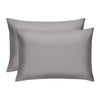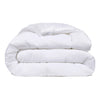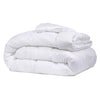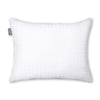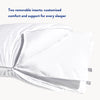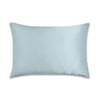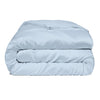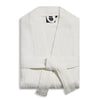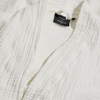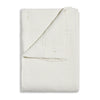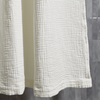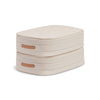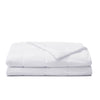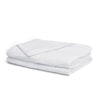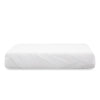The Daily Miracle
How To Remove Tea Stains From Clothes
Published
January 27, 2024
Author
Bridget Reed

Imagine savoring a warm, comforting cup of tea, a ritual that brings peace to your day. Suddenly, your tranquility is disrupted as tea dribbles onto your crisp white shirt, leaving a dreaded stain. This common mishap is all too familiar for tea enthusiasts.
The culprit behind these frustrating marks? Tannin. This natural component in tea causes those distinctive, stubborn marks and makes it so hard to clean tea stains. But there's no need for despair.
Armed with the right tea stain removal strategies, you can say goodbye to those pesky tea stains. Whether it’s a delicate white shirt or a cozy piece of upholstery, whether it’s tea or another type of stain, we’re here to talk about solutions, making unsightly stains a worry of the past.
Why Are Tea Stains So Hard To Remove?
Tea, a beloved beverage for many, is not just a source of comfort but also a common cause of laundry woes. The key component causing these woes is tannin, a natural dye found in tea leaves, especially prevalent in varieties like black tea and certain herbal teas.
Tannin’s ability to bond with fabric fibers makes tea stains particularly challenging to remove, especially from white clothes and delicate fabrics. These stains are not just a surface issue; they penetrate deep into the fibers, making quick and effective treatment crucial. Understanding the nature of these stains is the first step in effective tea stain removal.
Each scenario requires a nuanced approach, from tea stains from clothing to a significant spill on carpet or upholstery. At home, leveraging science-based methods and products can make the task less daunting, preserving the beauty and longevity of your cherished garments and textiles.
What’s the First Step?
When you spill a cup of tea, swift action is vital. After dabbing the stained area with a clean cloth or paper towel, immerse the fabric in cold or cool water. Agitating the fabric gently in the water can help loosen the tea particles before they adhere to the fibers.
For larger spills on upholstery or carpet, it's essential to blot as much liquid as possible with a paper towel, then apply a mixture of cool water and a mild dishwashing liquid directly to the carpet stain.
If you're dealing with a dried tea stain, re-wet the area with cold water before treating it. For delicate fabrics or items like a cherished white shirt, take extra care to dab rather than rub the stained area to avoid damage.
If you're out and don't have immediate access to water, applying a small amount of club soda can help in mitigating the stain. As with most problems in life, the quicker you deal with them, the easier they are to fix.
Are There Natural Pre-Treatment Solutions?
In addition to white vinegar solutions, there are other natural pre-treatment methods to consider. Lemon juice, for instance, can be effective, especially on white clothes.
Simply apply a few drops of lemon juice to the stained area and let it sit for a few minutes before rinsing it off with cool water. This method can be particularly effective for fresh tea stains.
Another option is to mix a small amount of hand dishwashing liquid with two cups of water. Apply this solution to the tea stain and gently work it in with your fingers or a soft toothbrush. This method can be especially useful for more stubborn stains or those on upholstery and carpet.
For silk or wool garments, you might want to avoid harsh treatments. Instead, try a mild mixture of dishwashing liquid and lukewarm water. Apply it gently to the stain and rinse thoroughly.
These natural solutions are not only effective but also minimize the risk of damaging sensitive fabrics, ensuring your garments remain in top condition.
What’s the Best Washing Technique?
Once the stain has been pre-treated, it's time to move on to washing. Select a gentle cycle for machine-washable items and use a high-quality laundry detergent.
If you're tackling a tea stain on a white shirt or other white clothes, a laundry detergent with a bleach alternative can be particularly effective. However, for colored fabrics, opt for a color-safe detergent to prevent fading.
If the stained garment is labeled as hand wash, fill a basin with warm water and a small amount of mild liquid detergent. Submerge the garment and gently agitate the water with your hands. Allow it to soak for a few minutes before rinsing thoroughly with cool water.
It's best to point out the stain to your dry cleaner for items marked as dry clean only. They can use specific removal methods tailored to the type of fabric and stain.
When washing tea-stained clothes in a washing machine, adding a cup of baking soda to the load can boost the cleaning power. Ensure that you use the warmest water safe for the fabric, as recommended on the care label.
After washing, check the stained area before drying. If the stain persists, repeat the pre-treat and washing steps. Avoid using hot water as it can set the stain, making it more challenging to remove.
Which Detergent Should You Use?
There are so many detergents to choose from, but our Miracle Made® Laundry Detergent Sheets stand out for their exceptional deep cleaning capabilities and environmental friendliness. These ultra-concentrated sheets are specifically formulated to tackle tough stains like tea and coffee, making them a formidable ally in your laundry arsenal.
Their hypoallergenic, toxic-free composition ensures they are gentle on all types of fabric and sensitive skin, while their earth-friendly nature aligns with a sustainable lifestyle. Unlike traditional detergents, which may contain up to 90% water leading to increased carbon emissions during transportation, these lightweight sheets are a more eco-conscious choice.
They dissolve quickly in hot or cold water and are suitable for all washing machines, including HE models. With our Laundry Detergent Sheets, you can expect a powerful clean that effectively removes tea stains while being gentle on your clothes and the planet.
What If the Stain Persists?
A more potent approach is necessary for stubborn tea stains that survive the initial wash. Applying a targeted stain remover like OxiClean directly to the affected area can be highly effective. These products are designed to penetrate deep into the fibers, breaking down and lifting the stain from the fabric.
After applying the stain remover, let it sit for a specified period to allow it to work on the stain thoroughly. If the stain persists despite these efforts, it's advisable to take the garment to a professional dry cleaner.
Dry cleaners have specialized techniques and solutions for tough stains and delicate fabrics, ensuring your garment is treated with the utmost care. Different types of fabric may require different treatment methods, so always check the product label and follow the recommended instructions for the best results.
Sip Back and Relax
Armed with these comprehensive steps and the right products, you're now fully equipped to tackle tea stains on any garment. From taking immediate action with cold water to employing Miracle Made® Laundry Detergent Sheets for their superior cleaning power and eco-friendliness, every step is crucial in ensuring the complete removal of tea stains.
So, next time you're faced with a tea spill, rest assured that you have the knowledge and tools to handle it with confidence and ease.
Sources:
Your Complete Guide to Understanding Care Labels | Planet Care


